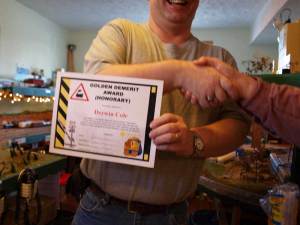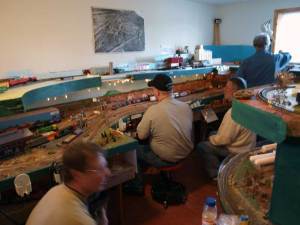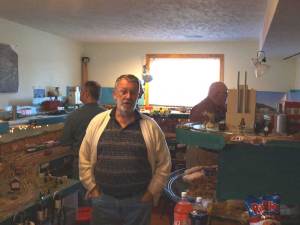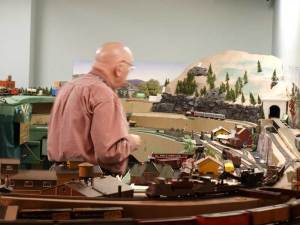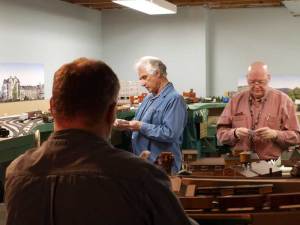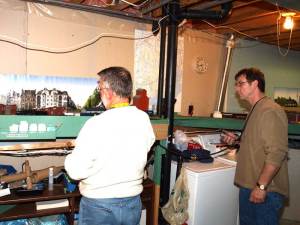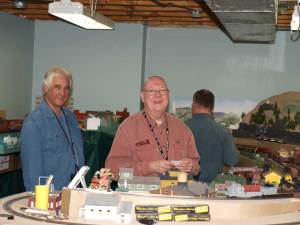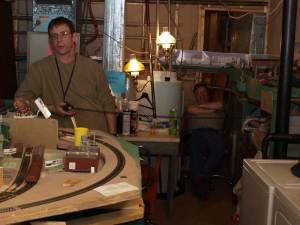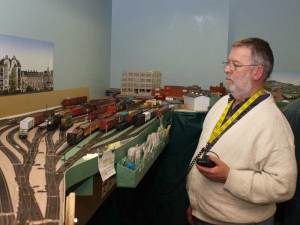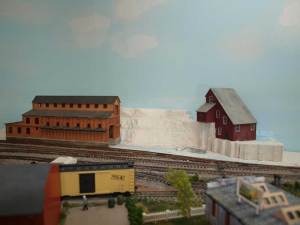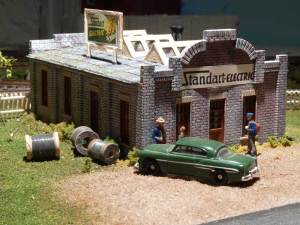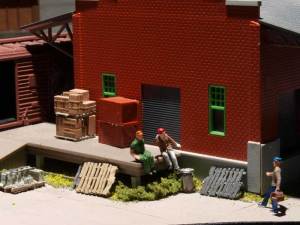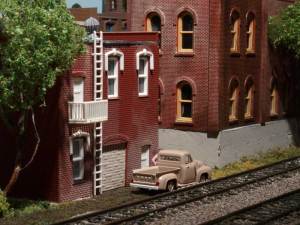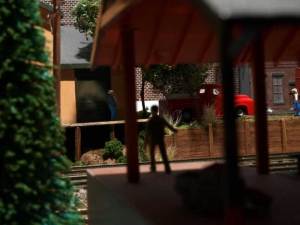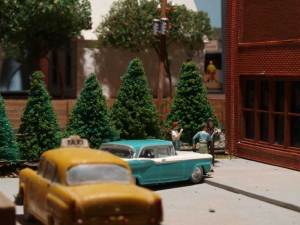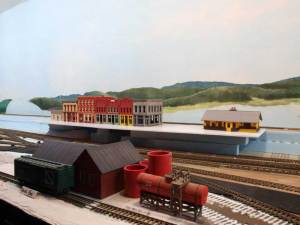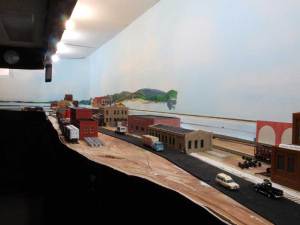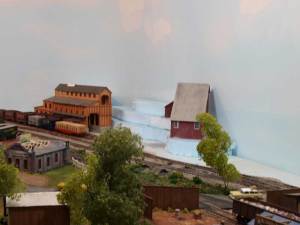I know it has been a long time since my last post. I have been busy getting my business going. The good news is that my business plan is complete and it’s full speed ahead trying to make some cash.
 I did take a break from work this weekend. I had ordered two MRC 1663 decoders made for Atlas S2’s and S4’s and picked them up yesterday. I installed one last night and the other one this afternoon. I took a little more time this afternoon and took a bunch of pictures to show the install.
I did take a break from work this weekend. I had ordered two MRC 1663 decoders made for Atlas S2’s and S4’s and picked them up yesterday. I installed one last night and the other one this afternoon. I took a little more time this afternoon and took a bunch of pictures to show the install.
 The loco I chose for this decoder is the first Atlas S2 (I think) that I bought. I can’t remember what it was painted for originally but I stripped it and started a paint job on it years ago and never did finish it. This was one of the first locos I installed a decoder into – long before NCE started producing their replacement decoder made for these locos. I put a Digitrax somethingorother decoder in it and squeezed it into the cab. It was a tight fit. I used the NCE decoders in two other S4’s and it was a much simpler install.
The loco I chose for this decoder is the first Atlas S2 (I think) that I bought. I can’t remember what it was painted for originally but I stripped it and started a paint job on it years ago and never did finish it. This was one of the first locos I installed a decoder into – long before NCE started producing their replacement decoder made for these locos. I put a Digitrax somethingorother decoder in it and squeezed it into the cab. It was a tight fit. I used the NCE decoders in two other S4’s and it was a much simpler install.
Anyway, back to the MRC decoder…

After I stripped out the old decoder I was left with this. I test fit the new decoder and, as they say in the instructions, I would have to grind a little off the rear end of the weight to fit the speaker. Some folks say to just remove the top weight and install the decoder, but I decided to leave it.
 The loco I did last night was a used one I had picked up at a show a couple years ago. It had an old Lenz decoder in it and the previous owner decided it didn’t need the top weight. When I put the MRC decoder in it there was nothing to grind so the install went very quickly. There isn’t a whole lot of extra weight to the top section anyway, so you could just leave it off.
The loco I did last night was a used one I had picked up at a show a couple years ago. It had an old Lenz decoder in it and the previous owner decided it didn’t need the top weight. When I put the MRC decoder in it there was nothing to grind so the install went very quickly. There isn’t a whole lot of extra weight to the top section anyway, so you could just leave it off.
 This photo shows where the clearance problem is. In order to insert the screw to hold the decoder in place the speaker needs to move about 1/16th inch toward the front of the loco. I took out my trusty Dremel and a suitable grinding wheel and went to work. I did this well away from the loco so that there was no way any of the fine material would get into the motor.
This photo shows where the clearance problem is. In order to insert the screw to hold the decoder in place the speaker needs to move about 1/16th inch toward the front of the loco. I took out my trusty Dremel and a suitable grinding wheel and went to work. I did this well away from the loco so that there was no way any of the fine material would get into the motor.
I worked slowly so I wouldn’t take off too much. I didn’t want it to be a hack job. It didn’t take long to trim off just enough so that the screw hole lined up perfectly.

This photo show just how much I had to take off. You can barely notice the indent in the weight, but it was enough. I was about 10 minutes into the job at this point.
 The next step was to put the weight back into place and add some electric tape on top to insulate it from the bottom of the decoder. I’m not sure this step is necessary since the bottom of the decoder looks like it is already coated with insulating material, but it says to do this in the instructions and it is better to be safer than sorry later.
The next step was to put the weight back into place and add some electric tape on top to insulate it from the bottom of the decoder. I’m not sure this step is necessary since the bottom of the decoder looks like it is already coated with insulating material, but it says to do this in the instructions and it is better to be safer than sorry later.
 There is a tab on the bottom of the decoder that makes contact with the top of the motor. This tab is one of the contacts to supply power to the motor and must be bent at an angle to assure good contact. The other power contact for the motor is made through the screw that attaches the decoder to the locomotive.
There is a tab on the bottom of the decoder that makes contact with the top of the motor. This tab is one of the contacts to supply power to the motor and must be bent at an angle to assure good contact. The other power contact for the motor is made through the screw that attaches the decoder to the locomotive.
 After I put the decoder in place on top of the weight, tightened up the screw, and soldered the pickup wires the installation is complete – Only about 20 – 25 minutes after starting the job. The only soldering that was required was to attach the 4 pickup wires that bring power from the rails to the decoder. The solder pads for these wires are a little small but clearly marked and easy to solder to. The decoder sat up a little on the speaker end, but flexed back down when the shell was installed. I think the tab to contact the motor on the bottom of the decoder might have been the cause. I then put the locomotive on the programming track to make sure all was well and then put the shell back on.
After I put the decoder in place on top of the weight, tightened up the screw, and soldered the pickup wires the installation is complete – Only about 20 – 25 minutes after starting the job. The only soldering that was required was to attach the 4 pickup wires that bring power from the rails to the decoder. The solder pads for these wires are a little small but clearly marked and easy to solder to. The decoder sat up a little on the speaker end, but flexed back down when the shell was installed. I think the tab to contact the motor on the bottom of the decoder might have been the cause. I then put the locomotive on the programming track to make sure all was well and then put the shell back on.
I use DecoderPro to program all but the address of my locos. The software makes it very easy to program decoders, especially sound units. So I fired up my 12 year old laptop that I use for this purpose and explored the decoder to see what it could do.
 As I expected from previous experience with MRC decoders, there are very few speed options. They are fine if you run the loco by itself, but it is very difficult to speed match locos for consisting.
As I expected from previous experience with MRC decoders, there are very few speed options. They are fine if you run the loco by itself, but it is very difficult to speed match locos for consisting.
 I also found that in order to get the loco to just barely start to move at speed step one I had to adjust the start voltage quite high. Then when I tried to set the top speed I had to bring the max. voltage wayyyy down, but if I brought it too far down the start voltage would mess up. So, in the end I decided that good slow speed adjustment was more important than a lower top end and set values of 11 for start voltage and 20 for max.
I also found that in order to get the loco to just barely start to move at speed step one I had to adjust the start voltage quite high. Then when I tried to set the top speed I had to bring the max. voltage wayyyy down, but if I brought it too far down the start voltage would mess up. So, in the end I decided that good slow speed adjustment was more important than a lower top end and set values of 11 for start voltage and 20 for max.
 Another thing I didn’t like about these decoders is the coarse volume adjustment. Other sound decoders I use have very fine adjustment of volume, but these decoders have only 4 settings – from 0 – 3. Setting 2 and 3 are way too loud for my liking. Setting 1 is a little too loud, but livable.
Another thing I didn’t like about these decoders is the coarse volume adjustment. Other sound decoders I use have very fine adjustment of volume, but these decoders have only 4 settings – from 0 – 3. Setting 2 and 3 are way too loud for my liking. Setting 1 is a little too loud, but livable.
One other thing I didn’t particularly like was that I couldn’t get the decoders to program on the main. It very tedious trying out various CV settings to see how they affected the decoder – moving the loco from the programming track to the main track several times while making adjustments.
Other than those things it seems like a pretty good decoder, especially if you don’t plan on consisting the loco. If you do be prepared for a lot of give and very little take. I’ll likely not put either of these two into a consist, but I might give it a try.
In the end I think the MRC 1663 is worth the money. It would be difficult to add sound to an Atlas S2 or S4 using most other sound decoders without a lot of work and modifications.
Later!
Scott
Addendum:
I neglected to mention that on a new install there is a metal screw through the bottom of the frame into the motor. The NCE ATLS2/S4 decoder includes a nylon screw to replace the metal one to isolate the motor from the frame. It also includes Kapton tape to be put under the motor to further isolate it from the frame. The MRC decoder includes neither, but I have read that you can buy nylon screws and that some people have used a small amount of rubber adhesive to secure the bottom of the motor. In either case, the bottom side of the motor must be isolated from the frame.
Scott














